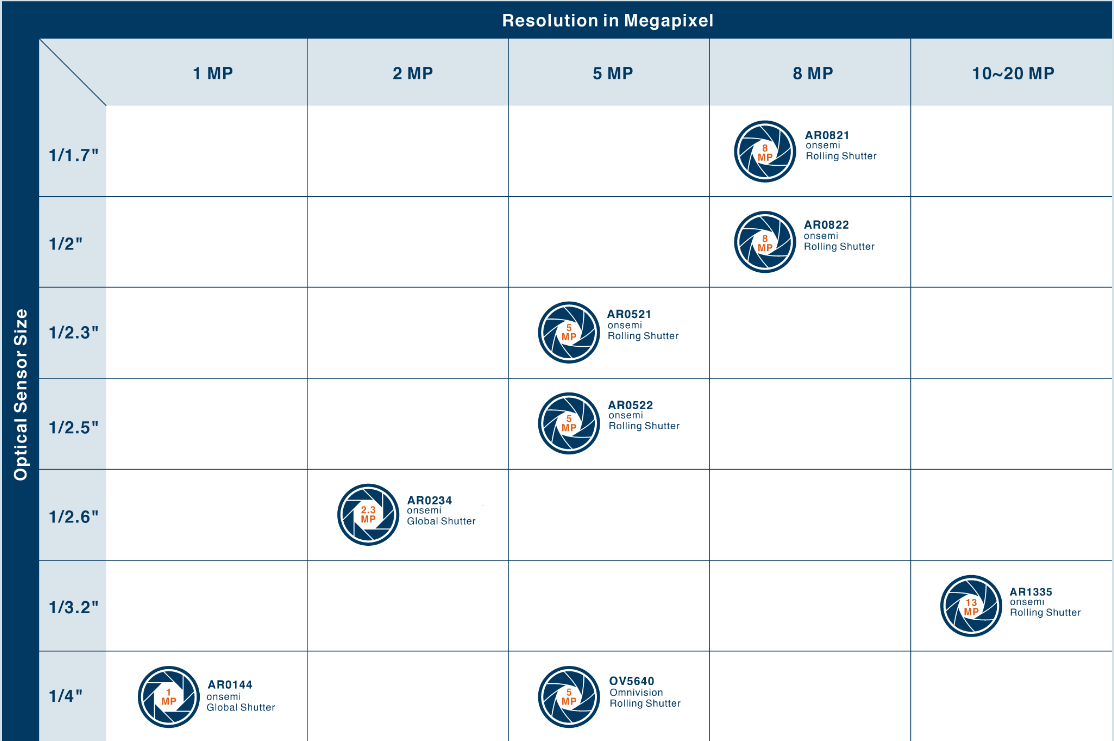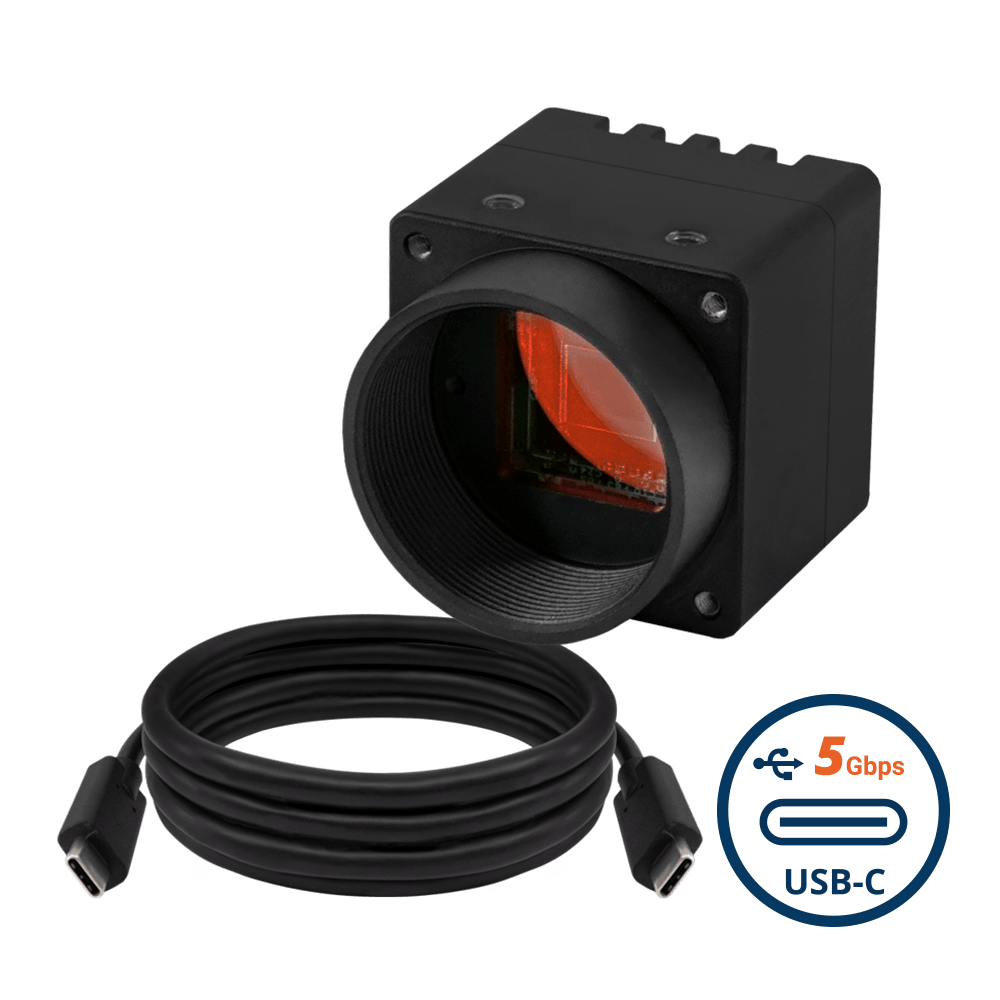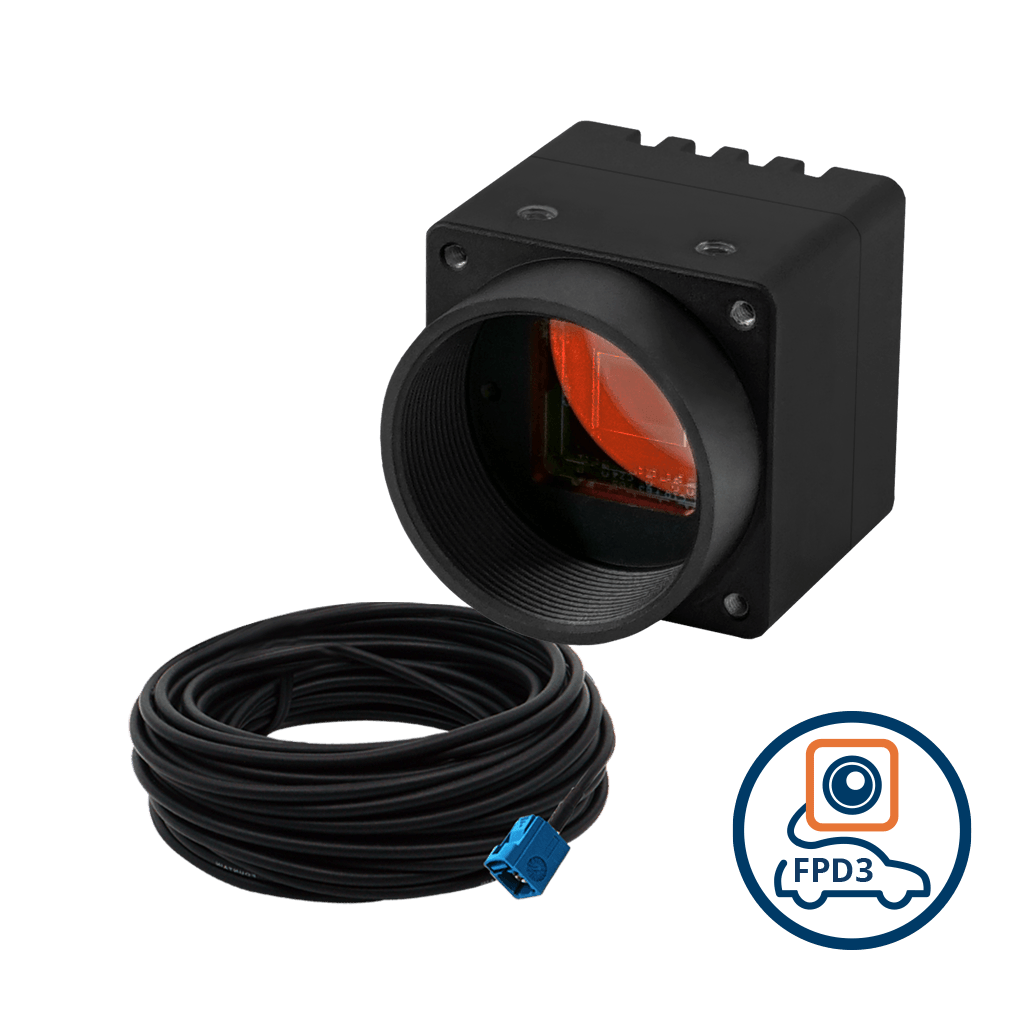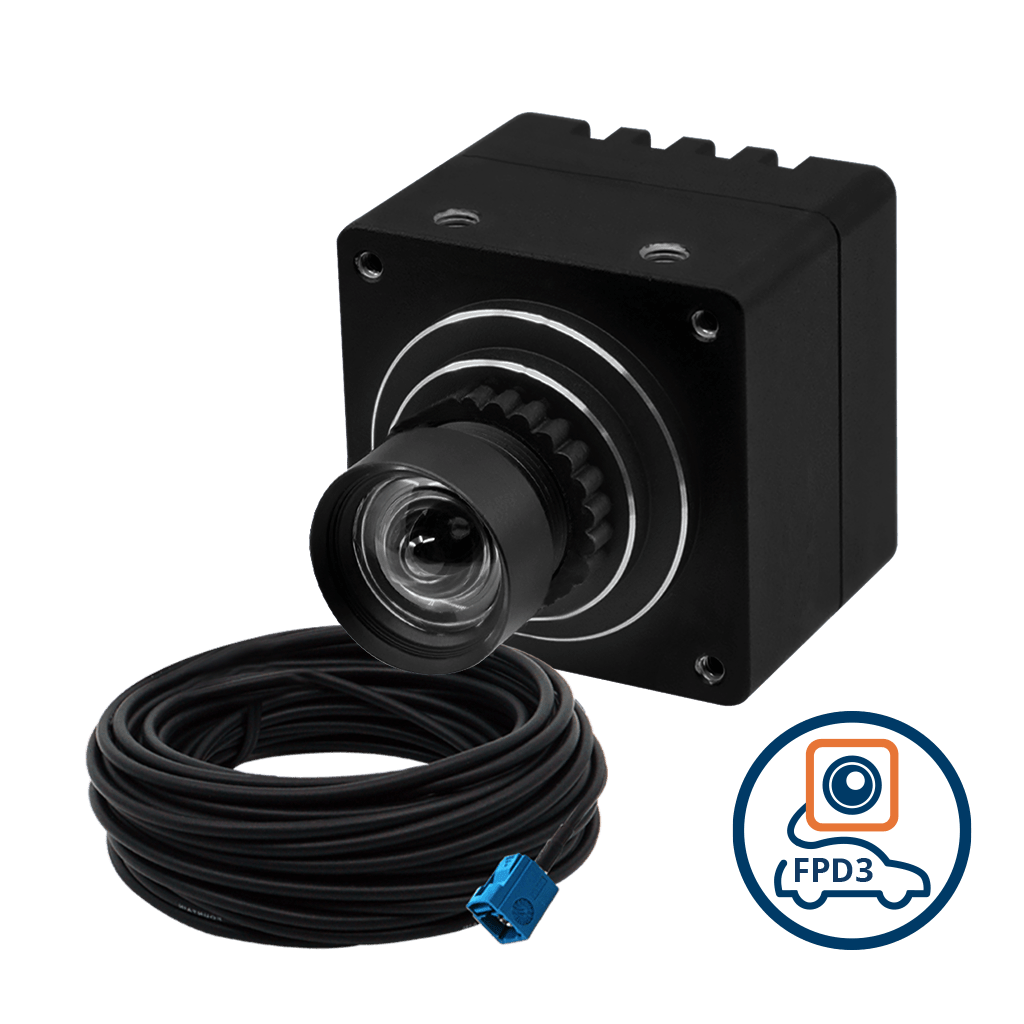Selecting the right camera lens is crucial for embedded vision systems to capture the best possible images.
Navigating the lens selection process may be difficult, as so many different lenses are available, each created to meet a unique purpose.
This article attempts to discuss all the factors you need to consider during the process to help you identify the ideal lens for your embedded vision device.
Why is Lens Selection Critical in Embedded Vision?
Lens selection directly influences image quality and overall performance. Different kinds of lenses have been developed to meet various application needs, making lens selection both crucial and difficult. The right lens must be used in conjunction with a high-quality camera to produce clear and sharp images. Important factors such as sharpness, clarity, distortion, contrast, etc., are all directly affected by the lens. Given the requirements in focal length, field of view, aperture, and mount type, the vast array of lenses available might be daunting.
Different Lenses for Different Purposes
From factory robots to security cameras to medical diagnostic devices, embedded vision has many potential uses. The following are examples of lens types often utilized for embedded vision applications:
Fixed Focal Length Lenses
Lenses with a constant focal length provide sharp images and easy setup, making them a popular choice for systems that need a consistent working distance. They find widespread use in situations when there is no change in the distance between the subject and the camera. Examples of such applications include ophthalmology, document cameras, and some surveillance systems.
Varifocal Lenses
In some applications, the subject of focus might be moving in the field of view. To keep the subject in focus, particularly where the depth of focus is small, varifocal lenses are necessary. These lenses can change their focal length, which also directly affects the working distance (subject) so that the subject can be put into focus at a range of depth.
Auto-focus lenses are a special type of varifocal lens. Autofocus lenses are controlled by the image sensor or embedded processor so that the focal length keeps the subject in focus.
Zoom Lenses
Zoom lenses allow you to change the focal length and field of view to suit your needs. Depending on the specific lens you use, you can get up to 10X zoom-in embedded cameras. Superzoom lenses offer a zoom of more than 10X but are rarely used in embedded vision applications since a zoom of 3X to 4X does the job in most cases. Zoom lenses shine in machine vision and surveillance systems, both of which benefit greatly from their versatility.
Using a lens to magnify a scene is called optical zoom. Another type of zoom used in embedded cameras is called digital zoom. In the former, the lens moves mechanically to bring the object closer to it, while the latter uses a part of the image and expands it later. While digital zoom does the job in a few embedded vision applications, certain others demand the quality of optical zoom.

Wide-angle Lenses
A wide-angle lens is ideal for capturing a wider picture in a small area because of its expansive field of view and is often used in patient monitoring systems, panoramic photography, photogrammetry, and telepresence, all requiring a wide field of view.
While there is no standard definition of a wide field of view (FOV), a lens with an FOV value of more than 70 degrees can be considered a wide-angle lens. One tradeoff is that wide-angle lenses typically have a shorter focal length. When it comes to focal length, a lens with a focal length of 35 mm or shorter is usually seen as a wide-angle lens.
This would be a good opportunity to discuss the difference between focal length (distance from the lens to the focal plane, or sensor) and working (or focus) distance.
Working distance vs. focal length: The distance from the front of the camera lens to the object is called the Working Distance. On the other hand, Focal Length is the distance to the focal plane from the rear side of the lens.
Telephoto Lens
Telephoto lenses are specialized optics that allow capturing high-magnification close-ups of faraway subjects. They come with long focal lengths – making it possible to view objects that are at a long distance. Long-range applications like parking lot management or sports analytics rely heavily on them.
It is important to note that many of these lens types are not mutually exclusive. A lens can come with multiple properties we discussed above. For example, a wide-angle lens could very well come with zoom capability.
Lens Selection for Embedded Vision Applications: Challenges And Factors
Here, we’ll review the most important factors to consider while choosing a lens and show how they manifest in practice.
Sensor Compatibility
Lenses are engineered to be compatible with specified sensor sizes, providing excellent image coverage and eliminating vignetting.
To attain optimal image quality, it is essential to pick a lens that fits your camera’s sensor size.
A lens built for a large sensor like AR0821 (1/1.7”) might not be suitable for the AR0521 sensor (1/2.5”).
Focal Length and Field of View
The focal length of a lens controls the recorded image’s field of view.
FOV is calculated using the formula DFOV = 2 x tan-1 (D/2f), where f is the focal length and D is the sensor size measured diagonally.
Camera Module FOV
DFOV = 2 x tan-1 (D/2f)
HFOV = 2 x tan-1 (W/2f)
VFOV = 2 x tan-1 (H/2f)
FOV is also represented in the form of HFOV (Horizontal FOV) and VFOV (Vertical FOV). These values are calculated by replacing the diagonal measurement of the sensor with width and height respectively as shown in the image above.

Focal Length and Field of View
The FOV requirements of every application differ.
For example, in airport kiosks and biometric systems, a wide-angle lens with a short focal length is generally selected to record a bigger field of view and capture a larger region.
In contrast, a larger focal length lens or a telephoto lens may be required to capture finer details from a distance in applications such as a parking lot monitoring system that needs to identify empty parking lots and recognize number plates from long distances.
Aperture and Lighting Conditions
The lens’s aperture regulates the quantity of light that enters the camera, affecting exposure and field depth.
Making the right lens aperture choice requires a thorough understanding of the lighting conditions in your application. A lens with a wider aperture may be necessary to collect more light and maintain adequate exposure in low-light situations.
For instance, a lens with a modest aperture may be appropriate in a factory automation application – provided the illumination is regulated and sufficient.
However, a lens with a larger aperture may be required in surveillance applications with fluctuating lighting conditions to ensure correct exposure, even in low-light or night conditions.
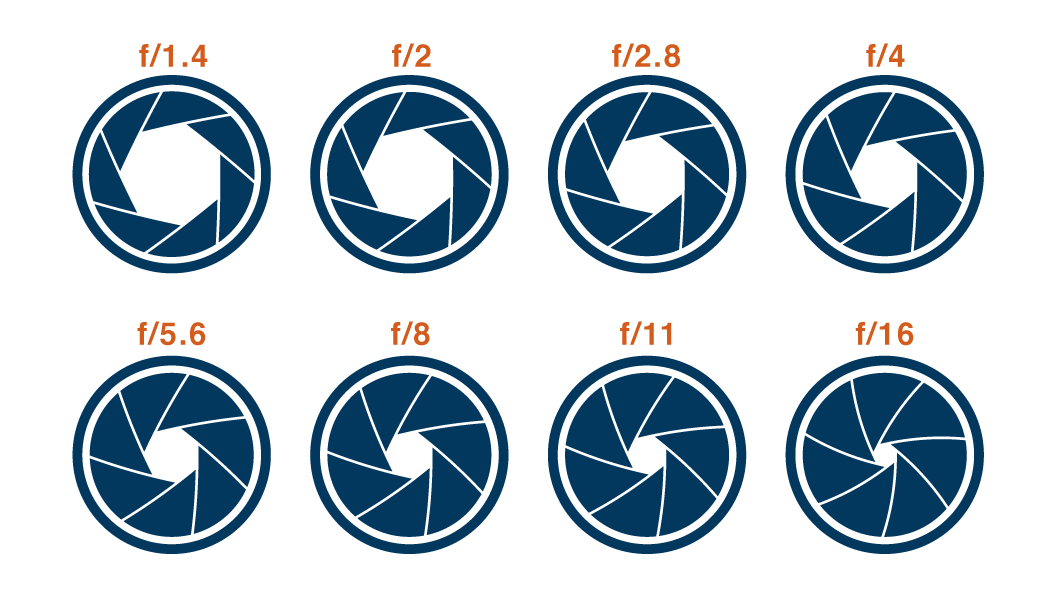
Lens Aperture Chart
The aperture of a lens is usually represented using the f-stop number or simply the f-number. They are calculated by dividing the aperture diameter by the focal length. The higher the aperture, the lower the f-number value. A low f-stop value (say f/1.4) represents a high aperture and means that the lens would allow a large amount of light to come in and fall on the sensor.
Another factor affecting the aperture will be the sensor itself. In sensors with lower quantum efficiency (QE), which are not as efficient at converting photons into sensor charge, a higher aperture may be necessary to improve the amount of light received.
Lens Mount Compatibility
Lenses must be compatible with the camera system’s mount for smooth integration and accurate alignment. Various lens mounts are used in embedded camera systems, including C Mount, S Mount, and CS Mount.
While S Mount lenses come with a thread diameter of 12mm and a pitch of 0.5 mm, C Mount lenses have a thread diameter of 25.4 mm and a pitch of 0.75 mm. CS-Mount lenses come with the same thread diameter and pitch as C-Mount lenses but differ in flange focal distance.
Embedded camera manufacturers choose a mount type for a camera depending on the end application it is targeted for. For instance, some applications demand larger lenses, in which case the C Mount is preferred over the S Mount. And you need to choose a lens that matches the mount type.
Image Circle Diameter
The image circle diameter is the area that the lens’s projection onto the sensor covers. It determines the coverage area and must be equal to or larger than the sensor size to prevent vignetting and image distortion at the margins.
The image circle diameter must be considered alongside the sensor compatibility factor. Choosing a lens with the correct image circle diameter guarantees that the entire sensor area is utilized, resulting in optimal image quality and coverage.
How TechNexion Helps in Choosing the Right Lens
We understand the complexities involved in selecting the appropriate lens for embedded vision applications and offer valuable assistance to facilitate the process.
We have a team of professionals with extensive knowledge of embedded vision systems and their components. Whether you have application-specific requirements or need assistance figuring out technical specifications, our experts can provide valuable insights to help you make informed decisions.
We recognize that every embedded vision application is distinct and may have individualized requirements. We provide recommendations tailored to your application requirements. by taking into consideration important factors such as:
- Sensor size.
- Intended field of view.
- Illumination conditions.
- Expected image quality.
We also offer customization options to meet your embedded vision project’s particular requirements. If you require specialized lenses or modifications to existing lens configurations, we can develop customized solutions in collaboration with you. This ensures that the lens chosen for your application is performance-optimized and integrates seamlessly with TechNexion’s camera systems. You can go through our embedded vision solutions here.

FPD-Link III Aluminium Enclosed Camera with onsemi AR0821 8MP 4K Rolling Shutter with Onboard ISP + S-mount Lens with IR-Cut Filter
VLS-FPD3-AR0821-SL
- onsemi AR0821 8MP Rolling Shutter Sensor
- 4K HDR Imaging Capabilities
- Designed for Low Light Applications
- S-Mount for Interchangeable Lenses
- FAKRA Z-Code Automotive Connector
- Plug & Play with Linux OS & Yocto
- VizionViewer™ configuration utility
- VizionSDK for custom development
Related Products
- Why is Lens Selection Critical in Embedded Vision?
- Different Lenses for Different Purposes
- Fixed Focal Length Lenses
- Varifocal Lenses
- Zoom Lenses
- Wide-angle Lenses
- Telephoto Lens
- Lens Selection for Embedded Vision Applications: Challenges And Factors
- Sensor Compatibility
- Focal Length and Field of View
- Aperture and Lighting Conditions
- Lens Mount Compatibility
- Image Circle Diameter
- How TechNexion Helps in Choosing the Right Lens
- Related Products
Get a Quote
Fill out the details below and one of our representatives will contact you shortly.

